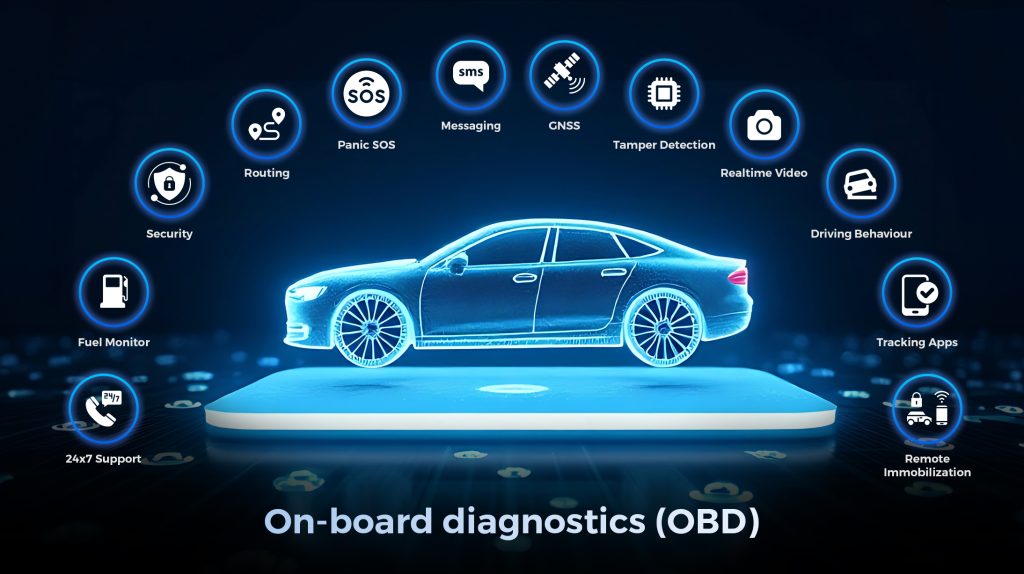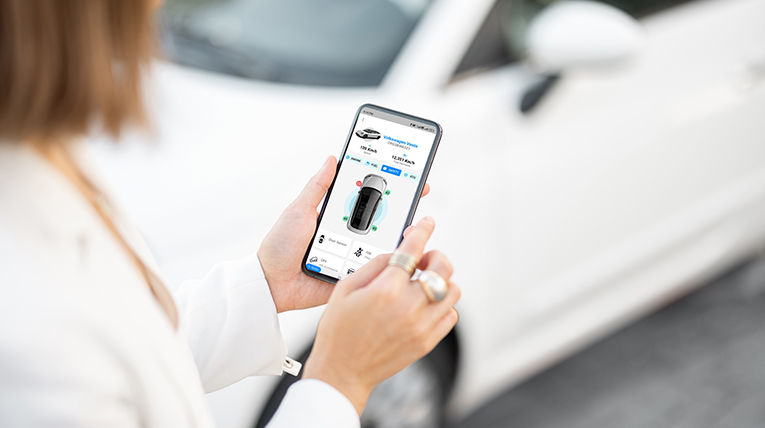Introduction
Telematics has revolutionized the automotive industry by enabling connected vehicle technologies. It integrates wireless communication, vehicular tracking and data exchange to improve fleet management, enhance safety and enable infotainment. With the transition from 4G to 5G, telematics solutions are evolving to offer higher speeds, lower latency and improved connectivity. This blog explores the differences between 4G and 5G telematics solutions, including connectivity modules, software implications, applications and integration challenges.

4G Telematics Solutions
4G LTE-based telematics solutions have served as the backbone of connected vehicles, delivering reliable communication, GPS tracking, remote diagnostics and Over-the-Air (OTA) updates. These systems facilitate real-time data exchange between vehicles and cloud platforms, enabling applications such as fleet management and predictive maintenance.
Key Features
- Data Speeds: Up to 100 Mbps
- Latency: 30-50 ms
- Coverage: Widespread and well-established globally
- Connectivity Modules: LTE Cat 4, Cat 6, Cat 12 and Cat M1/NB-IoT
- Applications: Vehicle tracking, remote diagnostics, infotainment, emergency calling (eCall) and OTA software updates
- Integration: Seamless with legacy automotive systems and existing cloud platforms
Limitations
- Higher latency compared to 5G
- Limited support for advanced V2X (Vehicle-to-Everything) applications
- Bandwidth constraints for data-intensive services
5G Telematics Solutions
5G is poised to transform telematics by offering ultra-fast, low-latency and highly reliable connectivity. It enhances communication between vehicles, infrastructure and cloud systems, paving the way for next-generation applications such as autonomous driving and real-time V2X communication.
Key Features
- Data Speeds: Up to 10 Gbps
- Latency: As low as 1 ms
- Coverage: Expanding, but currently limited compared to 4G
- Connectivity Modules: 5G NR (New Radio), mmWave, Sub-6 GHz and SA/NSA architectures
- Applications: Advanced driver-assistance systems (ADAS), autonomous driving, immersive infotainment and edge computing-based vehicle analytics
- Integration: Requires re-engineering of existing telematics control units (TCUs) and cloud platforms
Advantages Over 4G
- Ultra-low latency for real-time applications
- Greater bandwidth for high-definition media streaming and data transfer
- Enhanced V2X communication for improved safety and traffic efficiency
- Support for network slicing, enabling dedicated automotive services
Software Changes and Integration Challenges
The transition from 4G to 5G in telematics solutions requires significant software adaptations, including:
- Protocol Stack Updates: Migration from LTE-based protocols to 5G NR with enhanced V2X capabilities.
- Edge Computing Integration: 5G enables faster edge computing for real-time vehicle data processing.
- Cloud-Native Architectures: Cloud-based AI models for predictive analytics and autonomous decision-making.
- Security Enhancements: AI-driven cybersecurity frameworks to protect connected vehicles.
- OTA Software Management: More sophisticated update mechanisms for firmware, ECU software and infotainment systems.
Applications and Use Cases
The impact of 5G in telematics extends across multiple automotive applications. Here’s a comparison of use cases:
| Application | 4G Telematics | 5G Telematics |
| Fleet Management | Real-time tracking, remote diagnostics | AI-based analytics, predictive maintenance with edge computing |
| ADAS | Advanced driver alerts, lane assistance | Real-time V2X, automated emergency braking, cooperative driving |
| Infotainment | HD media streaming, navigation | 4K/8K video streaming, cloud gaming |
| V2X Communication | Limited DSRC-based communication | Ultra-reliable low-latency V2X (URLLC) |
| Autonomous Driving | Partial support (L2/L3 autonomy) | Full support for L4/L5 autonomy |
| Smart Cities Integration | Traffic flow monitoring, parking solutions | AI-driven traffic optimization, connected infrastructure |
VVDN’s Expertise in Telematics Solutions
VVDN Technologies has extensive experience in designing, developing and integrating telematics solutions for the automotive industry. Our capabilities includes:
- End-to-End Telematics Control Units (TCUs): VVDN offers both 4G and 5G-enabled TCUs, supporting global cellular connectivity standards.
- Custom Telematics Solutions: We offer tailor-made solutions for OEMs and Tier-1 suppliers, ensuring seamless integration with vehicle architecture.
- Advanced V2X Solutions: Our team develops next-gen V2X stacks for safer and more efficient communication between vehicles and infrastructure.
- AI & Edge Computing in Telematics: VVDN leverages AI and edge computing for real-time vehicle diagnostics and predictive analytics.
- Cloud & Cybersecurity Solutions: We develop cloud-native telematics platforms with multi-layered security mechanisms to protect vehicles from cyber threats.
- Comprehensive Testing and Validation: VVDN performs functional, interoperability, security and performance testing to ensure robust and reliable telematics solutions.
For more information on how VVDN can help with your telematics needs, contact us today info@vvdntech.com.

























